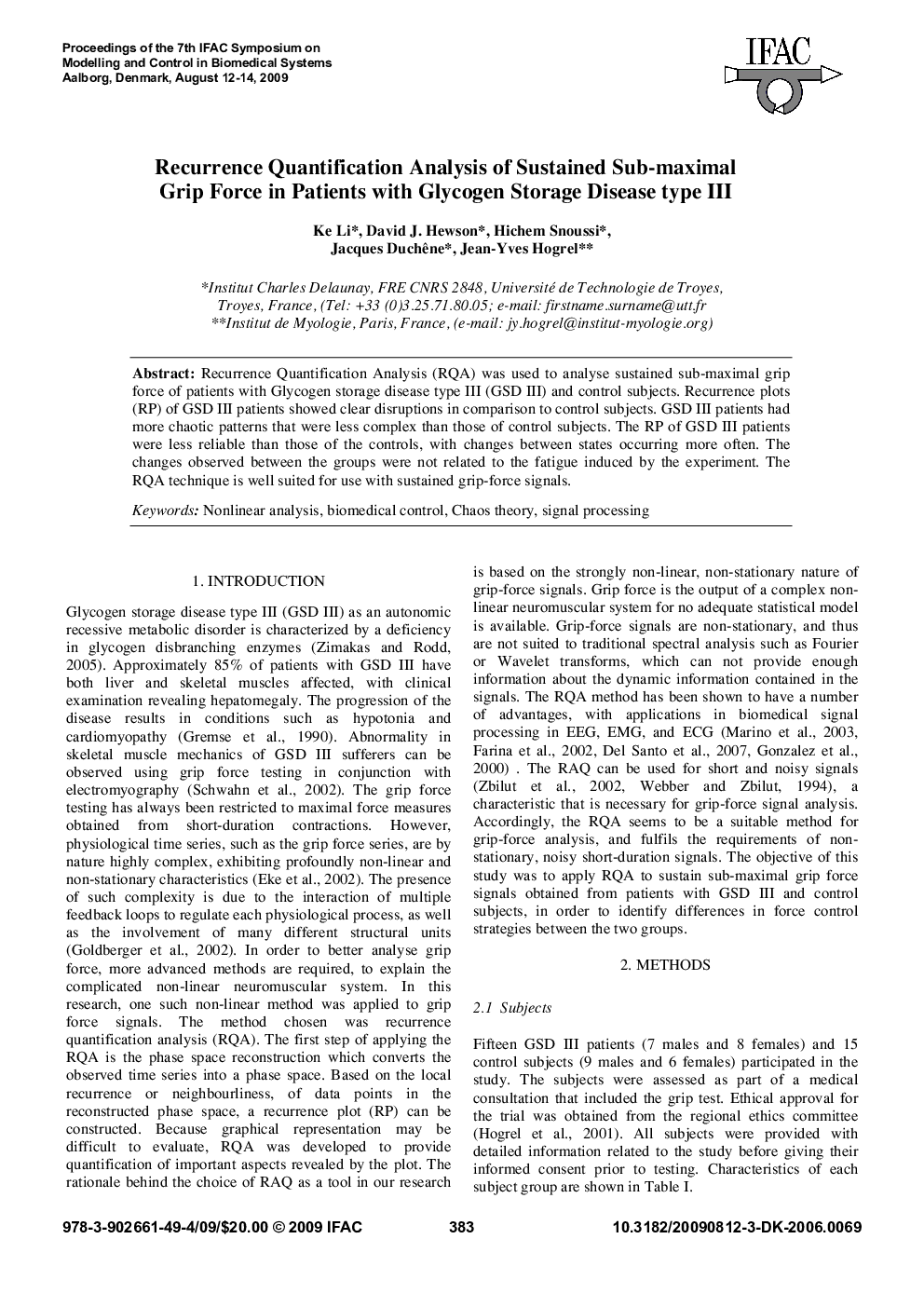| Article ID | Journal | Published Year | Pages | File Type |
|---|---|---|---|---|
| 719492 | IFAC Proceedings Volumes | 2009 | 6 Pages |
Abstract
Recurrence Quantification Analysis (RQA) was used to analyse sustained sub-maximal grip force of patients with Glycogen storage disease type III (GSD III) and control subjects. Recurrence plots (RP) of GSD III patients showed clear disruptions in comparison to control subjects. GSD III patients had more chaotic patterns that were less complex than those of control subjects. The RP of GSD III patients were less reliable than those of the controls, with changes between states occurring more often. The changes observed between the groups were not related to the fatigue induced by the experiment. The RQA technique is well suited for use with sustained grip-force signals.
Related Topics
Physical Sciences and Engineering
Engineering
Computational Mechanics
